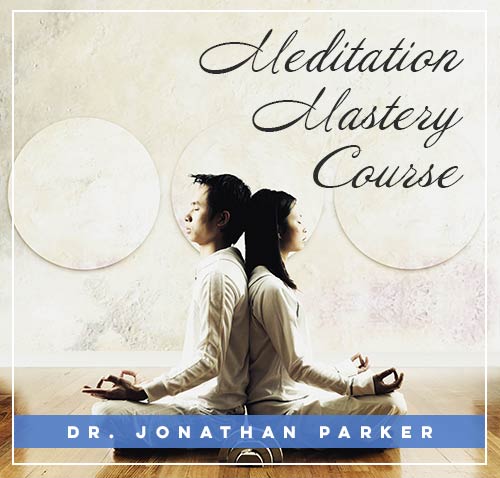Mindful Communication: Speak and Listen with Intention

Before diving in, please note: This post is for informational purposes only. If you’d like to know more about how we approach topics, feel free to check out our friendly Disclaimer Page.
Hey there, amazing readers! 🖐️ Just a quick note: yes, we know there are a lot of ads here. Trust us, we get it—it’s not the prettiest look, but they help us keep this blog alive and kicking. Those pesky little ads cover the costs of all the behind-the-scenes magic, from hosting and tech stuff to creating content we hope you’ll love.
We’re committed to delivering quality posts, and your support (even just sticking around despite the ads) means everything to us. So, bear with us, and thanks for helping us keep the good vibes rolling. Now, on to the fun stuff! 😉
TRANSLATE BUTTON AT THE END OF THE ARTICLE
A Quick Overview
Mindful communication is a powerful tool that can transform the way we interact with others, allowing us to speak and listen with intention.
By being fully present in our conversations and understanding the impact of our words, we can build stronger relationships, cultivate empathy, and overcome communication barriers.
This article delves into the importance of mindful communication, the power of intention, tips for speaking with clarity, active listening techniques, and much more.
By incorporating mindful communication into our daily routines, we can create more meaningful connections and enhance our overall well-being.
The Importance of Mindful Communication
Effective communication is essential for healthy relationships, both personally and professionally.
Mindful communication goes beyond just hearing words; it involves being fully present in the moment, understanding the nuances of verbal and nonverbal cues, and responding with empathy and clarity.
By practicing mindful communication, we can avoid misunderstandings, build trust, and foster deeper connections with others.
It allows us to express ourselves authentically while also respecting the perspectives and feelings of those we are communicating with.
Understanding the Power of Intention
Intention is at the core of mindful communication.
Before speaking, take a moment to reflect on your purpose and desired outcome.
Are you aiming to convey information, express emotions, or simply connect with the other person?
By setting a clear intention, you can communicate more effectively and authentically.
Your intention will guide the tone of your voice, choice of words, and overall message.
When you speak with intention, your words carry more weight and impact, leading to more meaningful interactions.
Tips for Speaking with Clarity
Speaking with clarity is crucial for effective communication.
Here are some tips to help you communicate more clearly:
Take a moment to organize your thoughts before speaking.
Use simple and concise language to convey your message.
Maintain eye contact and pay attention to your body language.
Avoid interruptions and actively listen to the other person.
Ask clarifying questions if needed to ensure understanding.
By speaking with clarity, you can avoid miscommunication and ensure that your message is accurately received.
Active Listening Techniques
Active listening is an essential component of mindful communication.
To be an active listener, focus on the speaker without distractions, maintain eye contact, and show empathy through verbal and nonverbal cues.
Reflect back what the speaker is saying to ensure understanding and ask open-ended questions to encourage further dialogue.
By actively listening, you demonstrate respect and attentiveness, strengthening your connection with the speaker and fostering a more meaningful conversation.
Cultivating Empathy in Conversations
Empathy plays a significant role in mindful communication.
Put yourself in the other person’s shoes and try to understand their perspective and emotions.
Show empathy through your words and actions, acknowledging their feelings and validating their experiences.
By cultivating empathy in conversations, you can create a safe and supportive environment for open communication, building trust and deepening your relationships with others.
Setting Boundaries in Communication
Setting boundaries is essential for maintaining healthy communication.
Clearly communicate your needs, preferences, and limits to others, respecting their boundaries in return.
Boundaries help establish mutual respect and create a space where both parties feel comfortable expressing themselves.
By setting boundaries in communication, you can prevent misunderstandings, conflicts, and ensure that your interactions are respectful and productive.
The Role of Nonverbal Cues
Nonverbal cues, such as facial expressions, gestures, and tone of voice, play a significant role in communication.
Pay attention to the nonverbal cues of both yourself and the other person to better understand the underlying emotions and intentions behind the words spoken.
Nonverbal cues can often convey more meaning than words alone, providing valuable context and insight into the speaker’s true feelings.
By being attuned to nonverbal cues, you can enhance your communication and establish a deeper connection with others.
Managing Emotions During Conversations
Emotions can impact our communication, influencing the way we speak and listen.
It’s essential to manage your emotions during conversations, remaining calm and composed to avoid conflict or misunderstandings.
Take deep breaths, pause before responding, and acknowledge your emotions without letting them control your words.
By managing your emotions effectively, you can communicate more thoughtfully and engage in productive conversations that promote understanding and connection.
Practicing Mindfulness in Daily Interactions
Mindfulness is a key component of mindful communication.
By being present in the moment, focusing on your breath, and staying aware of your thoughts and emotions, you can engage in conversations with greater clarity and intention.
Practice mindfulness in your daily interactions by setting aside time for reflection, meditation, or simply taking a few moments to center yourself before engaging in conversation.
By incorporating mindfulness into your daily routine, you can enhance your communication skills and build more authentic relationships with others.
Building Stronger Relationships through Mindful Communication
Mindful communication is a powerful tool for building stronger relationships.
By being fully present, speaking with intention, and actively listening to others, you can foster trust, empathy, and mutual respect in your interactions.
Strong relationships are built on effective communication, understanding, and connection.
By practicing mindful communication, you can cultivate deeper connections with others, enhance your emotional intelligence, and create a more harmonious and fulfilling social life.
Overcoming Communication Barriers
Communication barriers can hinder effective dialogue and lead to misunderstandings.
By practicing mindful communication, you can overcome these barriers and create a more open and honest exchange with others.
Be aware of potential barriers such as distractions, biases, or preconceived notions, and actively work to address them.
Practice patience, empathy, and active listening to bridge the gap and foster a more inclusive and understanding communication environment.
Incorporating Mindful Communication into Daily Routine
Incorporating mindful communication into your daily routine can have a profound impact on your relationships and overall well-being.
Start by setting aside dedicated time for meaningful conversations, practicing active listening with friends, family, and colleagues, and reflecting on your communication patterns and habits.
By being intentional with your words, expressing empathy, and setting boundaries when necessary, you can create a more positive and authentic communication style that promotes connection, understanding, and mutual respect in all your interactions.
Conclusion
Mindful communication is a transformative practice that can enhance the quality of our relationships and interactions with others.
By speaking and listening with intention, cultivating empathy, setting boundaries, and being mindful of nonverbal cues, we can create a more harmonious and fulfilling communication environment.
Through practicing mindfulness in daily interactions and overcoming communication barriers, we can build stronger connections, foster trust, and promote understanding in all areas of our lives.
By incorporating mindful communication into our daily routines, we can unlock the secrets to more meaningful and authentic relationships.

The Enlightenment Journey is a remarkable collection of writings authored by a distinguished group of experts in the fields of spirituality, new age, and esoteric knowledge.
This anthology features a diverse assembly of well-experienced authors who bring their profound insights and credible perspectives to the forefront.
Each contributor possesses a wealth of knowledge and wisdom, making them authorities in their respective domains.
Together, they offer readers a transformative journey into the realms of spiritual growth, self-discovery, and esoteric enlightenment.
The Enlightenment Journey is a testament to the collective expertise of these luminaries, providing readers with a rich tapestry of ideas and information to illuminate their spiritual path.
Our Diverse Expertise 🌟
While our primary focus is on spirituality and esotericism, we are equally passionate about exploring a wide range of other topics and niches 🌍📚. Our experienced team is dedicated to delivering high-quality, informative content across various subjects ✨.
To ensure we provide the most accurate and valuable insights, we collaborate with trusted experts in their respective domains 🧑🏫👩🏫. This allows us to offer well-rounded perspectives and knowledge to our readers.
Our blog originally focused on spirituality and metaphysics, but we’ve since expanded to cover a wide range of niches. Don’t worry—we continue to publish a lot of articles on spirituality! Frequently visit our blog to explore our diverse content and stay tuned for more insightful reads.






